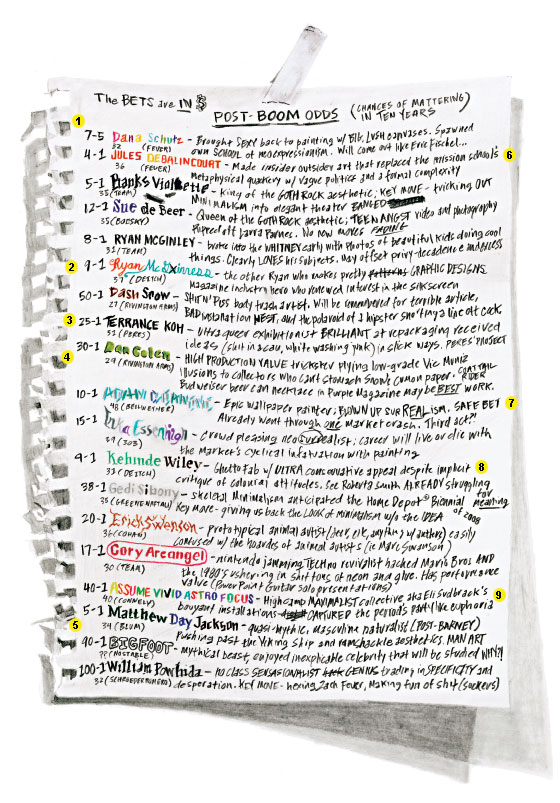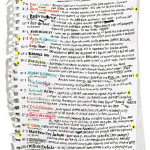By Big Red
Roundtable is a new feature where the staff at Big RED & Shiny respond to questions that are pertinent to the art world, simply on our minds, or have been nagging us. We share the questions with each other and simply write a response. In addition, we feel this is a perfect way to hear from you. If you want to comment and add to the discussion, please do. Or better yet, write us with a Question you would like us to discuss in the future. Enjoy!
Q: Do you think the art fairs created an unsustainable bubble inside the art market? If so, how did it contribute to the overall impact of the economic decline on the art market? If not, what role do you think the art fairs play in the new economy?
MM: It is hard to say whether or not art fairs created an unsustainable bubble, or are the result of that same excessive, inflated market. Probably both I suppose. When there is a lot of money floating around, people need to find efficient ways to get art and money in the same room. Getting everybody to fly to Miami seems like a good way to do that. I don't think art fairs are an economic problem, but its just like everything else, there is too many of them to keep up with, and a exorbitant amount of focus put on them. I doubt we'll see as many secondary and tertiary fairs in the future, but certainly NADA, Art Basel and the likes, will stick around. It would be nice to keep the idea of the fair alive. Who would want to see a bunch of galleries and artists getting together and selling art and drinking alcohol disappear? I think the concept just needs to be adopted to our "new" economy. Whatever that means.
CH: Art fairs are no different than the Dot-com and housing bubbles, but unlike them, fairs didn't bring about increased government regulation or even serious public scrutiny. Art fairs will be back when the art-buying public has money to spend on art.
MG: I once watched an interview with a man who said there were no bubbles in the housing market. To his credit, the man owned and sold homes for over sixty years, he didn't go for short selling. To his perspective, he had done what financial advisers sometimes encourage to novice investors to do: buy for the long term; buy what you like.
MN: One thing I noticed about the art fairs was how they created several tiers of artist careers. Some artists sold very well at fairs but had terrible gallery shows and sales. I think that the short-attention-span nature of the fairs created a push for art that survived that context, even when it seemed painfully vapid outside the art fair context. As this relates to the collapsing art market, I think that these artificially inflated artists created a sense that the market was stronger than it actually was, and a group of galleries sprung up, or changed models, based on this art fair success.
Q: Do you think William Powhida's list of artists that will survive the bust is accurate?
MM: I have no idea if it is accurate or not, but I do find it immensely entertaining. I hope his drawing sells. Considering it was featured in NY Magazine, it probably did. I imagine if everyone wrote a list of this kind, many would speculate on the same artists. Not that the majority feel these artists have made the largest contributions, just that everyone knows they have had the most volatile financial careers. I find that very indicative of our time.
CH: When has art not survived a recession? If an artist goes "bust" in a recession, then the world's probably a better place. For example, if Thomas Kincade had to close his factories the world would be a better place, but if Jeff Koons had to close his, he'd still remain an artist.
MG: And yet, list makers can still reorganize content and create value. In absence of attention, you can invoke the names of someone who has attention to create some for yourself. This is a much easier task than having to conjure it out of the ether by making something. If his list gains him some attention, and he is able to sustain it, he might have to pencil in his own name.
MN: Powhida seems to have a great sense of what is happening in New York, and doesn't pull punches. His work is funny and vicious! What strikes me about this list, though, is that it is mostly artists who had meteoric rises to fame in the last few years... is that enough to survive and sustain a career?
- William Powhida’s list





